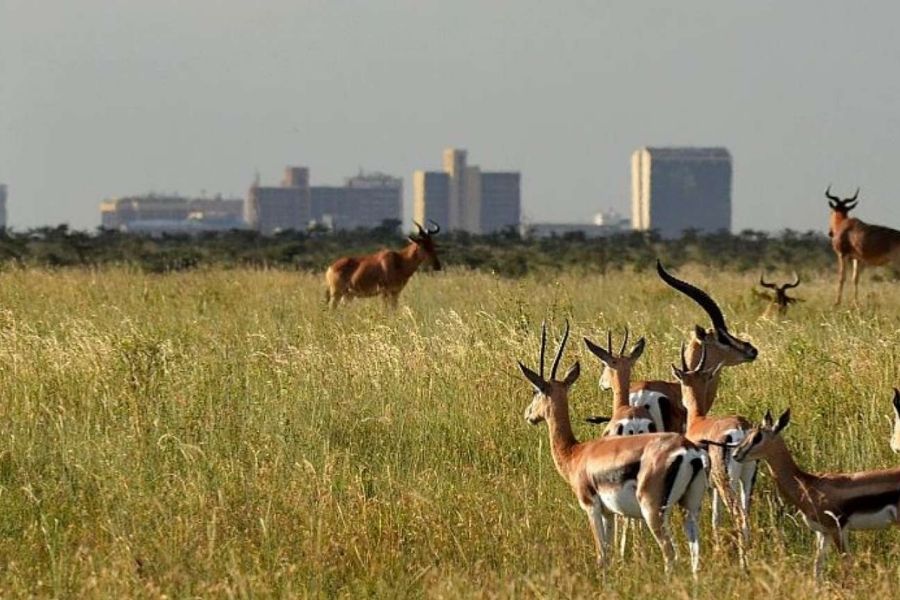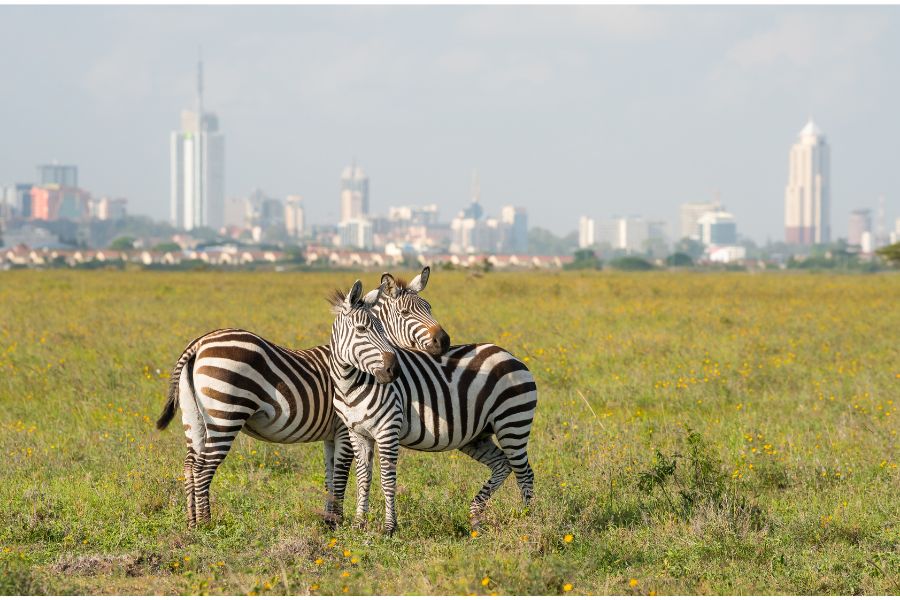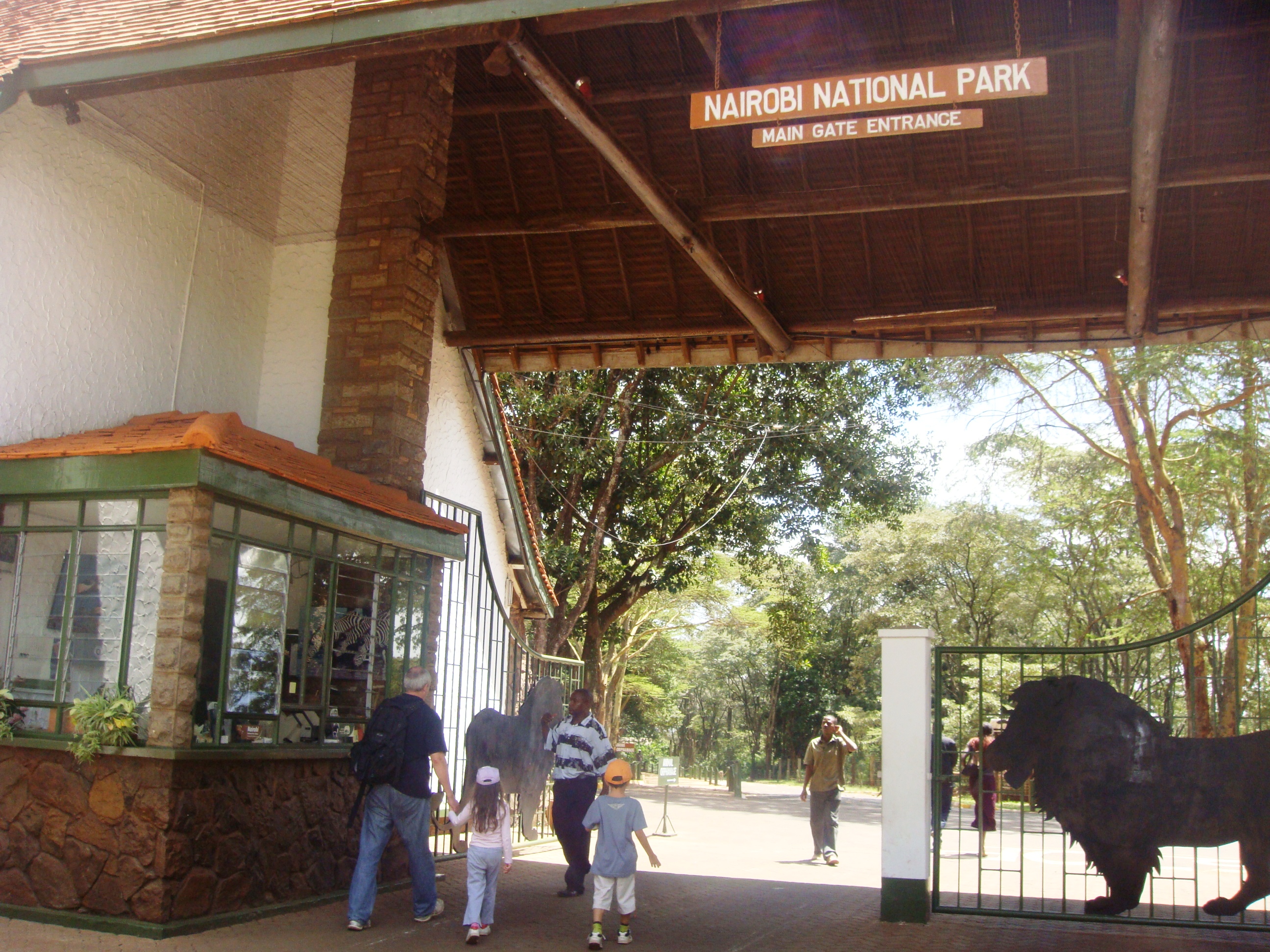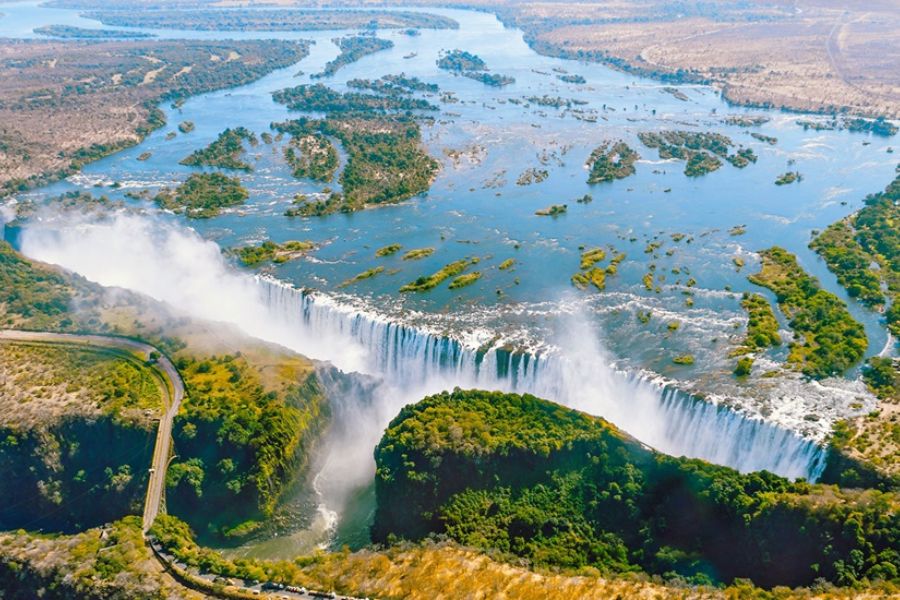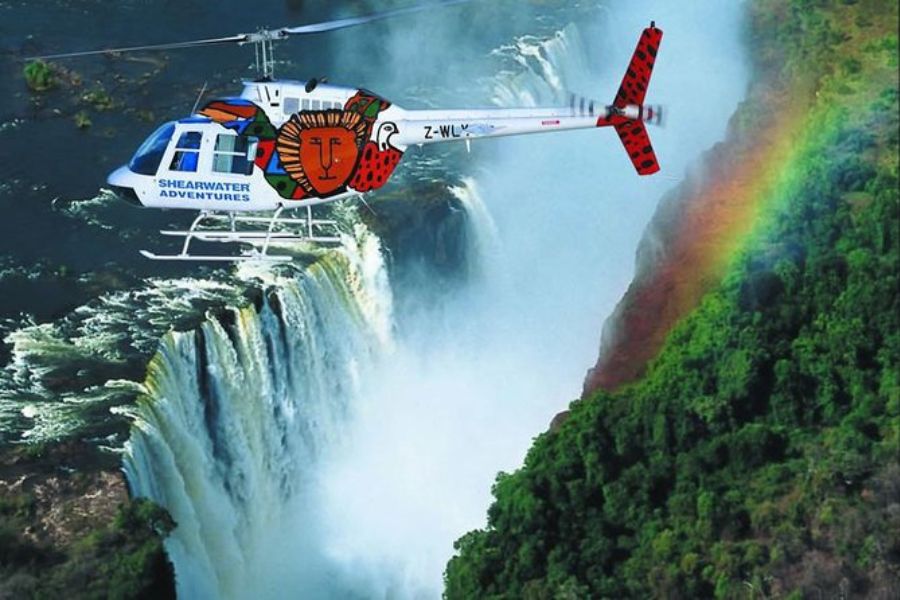INTRODUCTION
Nairobi National Park is in south-central Kenya, 5 miles (8 km) south of Nairobi.
It was the first national park established in Kenya (1946), has an area of 45 square miles (117 square km), and lies about 5,000–6,000 feet (1,500–1,800 meters) above sea level.
It consists partly of thick woods near the city outskirts, partly of rolling plains and valleys, and partly of a wooded confluence of several rivers.
Its vegetation is of the dry transitional savanna type. Acacias and other thorny varieties, such as muhuhu, Cape chestnut, and Kenya olive, are the most important trees.
Scores of mammals, such as lions, gazelles, black rhinoceroses, giraffes, various species of antelope, zebras, numerous reptiles, and hundreds of species of birds, inhabit the park.
Only by establishing migration routes into nearby Ngong Reserve has it been possible to maintain wildlife in the area at its present levels.
The Nairobi Animal Orphanage, founded in 1963, is inside the park. The park's headquarters are in Nairobi.
THINGS TO DO
Whether you choose to self-drive or join an organized tour, game drives are the main attraction of a visit to Nairobi National Park. Although the park is not the most authentic safari experience in Kenya, the juxtaposition of seeing wild animals in such an incongruously urban setting is a significant draw for many visitors.
Another highlight is the David Sheldrick Wildlife Trust, whose orphanage for rescued elephants and rhinos is inside the park. Founded by Dame Daphne Sheldrick in 1977, the charity welcomes members of the public for one hour in the morning every day to watch the babies being bathed and fed.
For the most part, visitors are prohibited from exiting their vehicles while inside the park—there could be a lion hanging out nearby, after all. However, there are a few marked spots where you can stretch your legs and walk around, including a scenic picnic area at Impala Observation Point for lunch. One of the best walking trails takes you to the hippo pools, where the largest concentration of these aquatic herbivores can be found.
In 1989, former president Daniel Arap Moi ordered the burning of 12 tons of confiscated elephant ivory inside the park as a symbol of Kenya's zero-tolerance policy on ivory trafficking. The Ivory Burning Site Monument commemorates this event and is a must-see spot for conservationists.
SAFARI
With a total area of just over 45 square miles, Nairobi National Park is one of the smallest national parks in Africa, yet it supports an astonishing variety of wildlife. It is home to four Big Five animals (with elephants being the notable exception), including black and white rhinos. It is one of the most successful rhino sanctuaries in Kenya.
It is one of only a few places left where visitors are virtually guaranteed a sighting of the critically endangered eastern black rhino. In addition to lion and leopard, the park's predators include cheetah and hyena, while herbivores range from the Maasai giraffe to Coke's hartebeest, eland, waterbuck, and impala.
Choosing the right safari tour operator isn't easy, especially since many local companies—which tend to be the cheapest—don't have websites. However, the Kenya Association of Tour Operators, or KATO, maintains a directory of reputable tour operators nationwide, so start there. Another option is to arrive at the main gate of the national park, where there are always tour guides waiting and available to hire for the day.
WHERE TO CAMP
The park has three public campsites, all of which offer electricity, hot water showers, and communal kitchens. You can rent one from the main gate if you don't have a tent.
For a camping experience that's a step up from just pitching a tent, the Nairobi Tented Camp is located within the park boundaries and is more of a "glamorous" experience.
Located on the reserve's west side, it includes nine luxurious permanent tents, all with en-suite bathrooms and solar lighting. Gourmet meals are served in the bush under the stars or in the dining tent, and water is heated over log fires.
WHERE TO STAY NEARBY
Nairobi National Park is also conveniently close to the affluent suburbs of Langata and Karen, both offer a wide range of accommodation options ranging from comfortable guesthouses to five-star hotels.
- Giraffe Manor: This guesthouse is located on the grounds of the Giraffe Centre in Langata for nature lovers. In addition to 12 double rooms outfitted in grand colonial style, this boutique option is made unique by the Rothschild's giraffes that roam freely around its grounds. Staying here also puts you within easy reach of other top Nairobi attractions.
- Palacina Residential Hotel: This family-run hotel is known just as much for its warm and friendly service as it is for its boutique vibe. It's located in the Kilimani neighborhood, not far from the presidential residence, and just 20 minutes by car from the national park entrance gate.
- Emakoko: If you want an African bush experience in Nairobi, then Emakoko is about as close as you can get. This 10-room lodge is located on the southern edge of the national park and far away from the busy city center, so guests can fully disconnect and enjoy Nairobi's natural side.
HOW TO GET THERE
Nairobi National Park is within Nairobi's city limits and just 6 miles from the city center. If you have access to a car or plan on hiring one, you can self-drive around Nairobi National Park. Otherwise, hiring a six-seater Land Cruiser (complete with a driver and guide) from the main gate is possible.
The cheapest way to experience the park is on the Kenya Wildlife Service shuttle safari. This passenger coach runs on weekends and public holidays and departs from the Development House in the city center or the park's main gate.
It is also possible to get to the park using public transport: hop on the bus—Matatu 125 or 126—from Nairobi Railway Station, both of which drop you at the main gate. The journey from the station takes around 35 minutes.
ACCESSIBILITY
Nairobi National Park is mainly explored inside a vehicle, making it accessible for most guests with mobility challenges. However, between the bumpy roads and frequent stops, be aware that a safari is much more physically demanding than just sitting in a car.
Thankfully, multiple tour operators in Kenya, such as Go Africa Safaris or Spot Kenya Safaris, are fully dedicated to assisting disabled travelers. You can use them to answer questions about your upcoming trip or even book a multiday safari around the country.
The David Sheldrick Wildlife Trust inside the park, or the baby elephant nursery, is also accessible to visitors in wheelchairs. It's a short pathway from the parking lot to the center, and even though it's a little bumpy, most wheelchair users shouldn't have a problem.
TIPS FOR YOUR VISIT
- Unless you know where you're going, entering the park with a tour guide is recommended. The guides communicate with each other about animal locations, giving visitors the best chance of seeing the animals that they're most interested in.
- Opt for a vehicle with an open roof for the best-unobstructed views of what's around you.
- Travelers often focus solely on spotting lions, buffalo, rhinos, and leopards, but remember, there are over 100 other mammals and 400 bird species that you can also see in the park.
-
Animals are most active in the early morning and evening, especially the big cats. Aim to visit early in the day or late in the day for the best chance to see something exciting.
-
The wet seasons are from April to June and from October to November. The roads can be challenging to navigate, so hiring a guide is extra essential, but fewer crowds and gorgeous wildflowers are in bloom.

